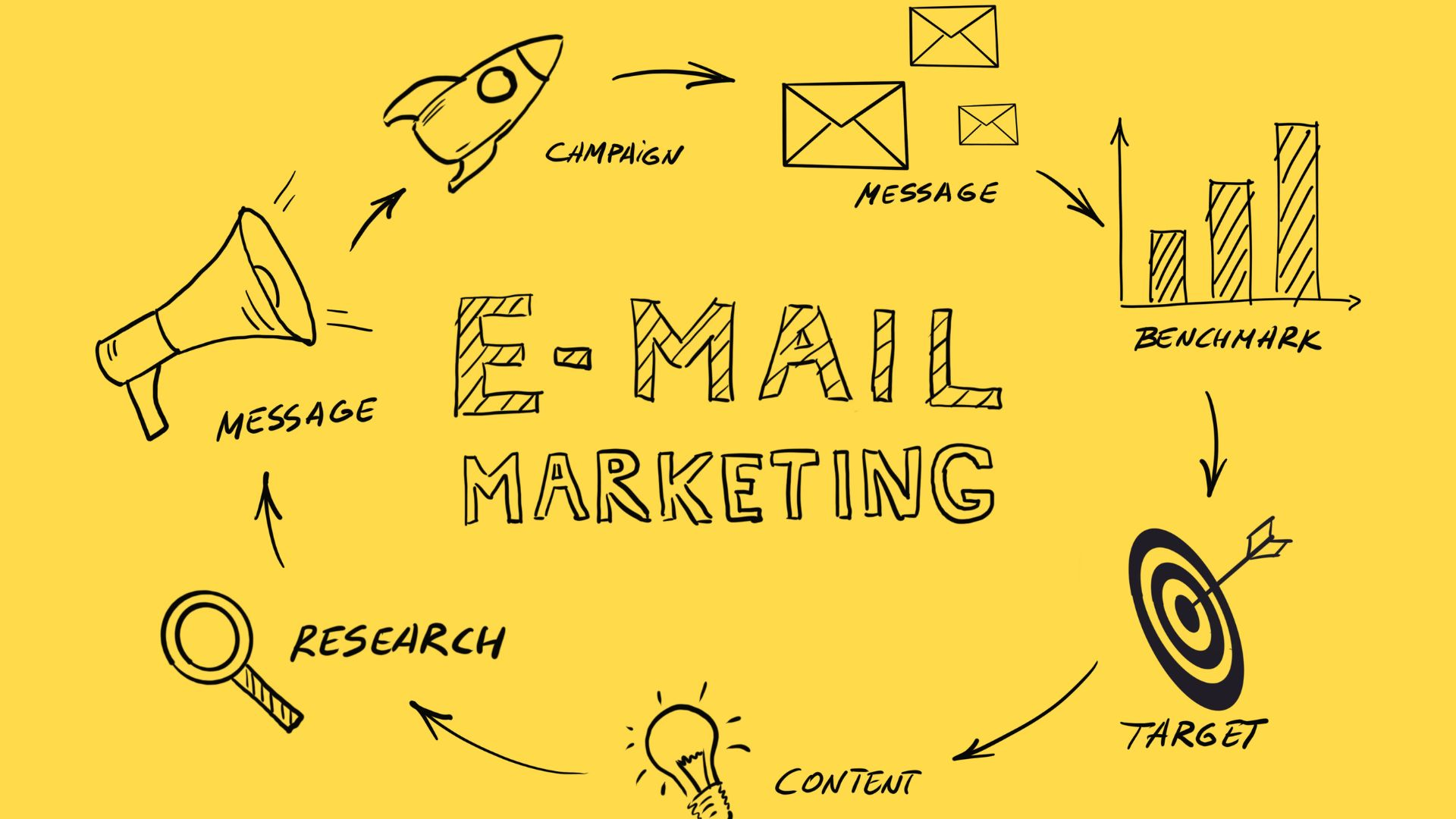As a seasoned podcaster, I’ve come to understand that crafting a compelling podcast is just the tip of the iceberg in the world of content creation. The question that often keeps podcasters awake at night is, “Why hasn’t my podcast gone viral yet?” Well, I think you may miss podcast email marketing campaigns for your show.
My name is Niall Mackay, and I’m the founder of Seven Million Bikes Podcasts. After years of producing podcasts, I have to say that podcast marketing is an art that can propel your content into the spotlight, connecting your voice with an engaged and passionate audience.
Email marketing is one of the most effective methods to build a community of loyal fans who eagerly anticipate your episodes, ensuring that your podcast doesn’t just get heard but thrives in the hearts and minds of your audience.
I will share with you the unique benefits as well as the tips and strategies of email marketing for podcasts. Let’s get started!

Podcast Email Marketing- Benefits
Podcast Email Marketing Strategy involves sending emails to a group of individuals or subscribers with the goal of promoting products, services, content, or building and nurturing relationships.
As an experienced podcaster, I’ve discovered the immense benefits of podcast email campaigns, and I’m excited to share them with you.
Direct Audience Connection
One of the most significant advantages of podcast email marketing is the direct connection it offers with your podcast listeners. When listeners willingly share their email addresses, they’re inviting you into their inboxes, creating a personal and exclusive channel of communication. This direct line enables you to engage with your audience on a deeper level.
Offer your email subscribers exclusive access to bonus podcast episodes, behind-the-scenes content, or early releases. This exclusivity makes your subscribers feel valued and keeps them eagerly anticipating your next email.

Personalization
Effective email marketing allows you to personalize your messages. When subscribers receive emails addressing them by name and catering to their interests, it fosters a sense of connection and relevance. Personalization in podcast email marketing goes beyond addressing subscribers by their first names.
Divide your email list into segments based on demographics, interests, or engagement level. For example, you can create segments for new subscribers, long-time listeners, or those interested in specific podcast topics. This segmentation allows you to tailor your email content to each group’s unique preferences.
If you have monetization strategies in place, such as affiliate marketing or premium content, personalize your offers based on subscribers’ preferences. Highlight products or content that align with their interests to increase conversion rates.
Feedback and Engagement
Email marketing enables two-way communication. You can encourage listeners to reply to your emails, share their thoughts, and even suggest topics or guests for future episodes. This direct interaction fosters a community around your podcast and shows your audience that their opinions matter.
One common way to boost feedback is sending emails that explicitly invite feedback, questions, or episode suggestions. Make it easy for subscribers to reply directly to your emails and share their thoughts. Acknowledge and respond to their messages to create a genuine dialogue.
Use surveys and polls in your emails to gather insights on your audience’s preferences and interests. This data can help you tailor your podcast content to better meet their expectations.

Analytics and Insights
Email marketing platforms offer detailed analytics, allowing you to track open rates, click-through rates, and subscriber behavior. This data is invaluable for refining your email marketing strategy, understanding your audience better, and optimizing your podcast content.
- Open Rates
You can track the percentage of subscribers who open your emails. Understanding which subject lines and email content resonate most with your audience helps you refine your messaging for maximum impact.
- Click-Through Rates (CTR)
CTR measures the percentage of subscribers who click on links or calls to action within your emails. By analyzing which links receive the most clicks, you can identify the content and topics that generate the most interest.
- Subscriber Behavior
Email marketing tools offer insights into how subscribers interact with your emails. You can see which emails they engage with, the frequency of their interactions, and which devices they use. This information helps you tailor your email campaigns to align with their preferences.
- Segmentation Performance
Evaluate the performance of different email segments. Compare open rates, CTR, and conversion rates to determine which segments are most responsive to specific content or offers.
Email marketing Tool Examples: Mailchimp, Constant Contact, ConvertKit.
How To Write A Good Podcast Email Marketing
Here is a step-by-step guide to help you reach the best result for all your podcast email marketing efforts.
However, before you start, let’s determine what you want to achieve with your podcast email marketing. Are you promoting a new podcast episode, seeking to grow your subscriber list, or engaging with your existing audience? Having a specific goal in mind will guide your content and messaging.
Besides, know your target audience and their preferences. Consider their interests, pain points, and what motivates them to listen to your podcast. This understanding will help you tailor your email content to resonate with your audience.
Step 1: Craft an Engaging Subject Line
The subject line is the first thing recipients see, and it plays a crucial role and it should entice subscribers to open the email. Make it compelling, concise, and relevant to the content of your email. Use curiosity, urgency, or personalization to capture attention
Step 2: Create Valuable Content
The email content should provide value to your subscribers. Explain why they should listen to your podcast episode and highlight what they will gain from it. Use storytelling techniques or intriguing descriptions to generate interest. Keep the content concise and scannable.
The content you include should align with your purpose, whether it’s promoting episodes, building relationships, or driving conversions.

Let me give you some examples for each type:
Promoting New Podcast Episodes
If you want to promote your episodes, provide this information to your audience:
- Episode Highlights: Provide a brief summary or highlights of the new episode, showcasing what listeners can expect.
- CTA to Listen: Include clear and prominent calls-to-action (CTAs) that lead recipients to the podcast episode on your platform of choice.
- Episode Artwork: Feature eye-catching podcast logos related to the episode to visually entice readers.
- Release Schedule: If you have a consistent release schedule, mention when subscribers can expect new episodes.
- Subscriber Benefit: Emphasize how subscribing to your podcast or newsletter offers exclusive content or early access to episodes.
Building Relationships and Engagement
- Personalized Messages: Segment your email list based on subscriber preferences or engagement history. Send personalized content that matches their interests.
- Exclusive Content: Offer exclusive content or early access to episodes for email subscribers. This creates a sense of belonging and incentivizes subscription.
- Interactive Elements: Incorporate interactive elements like clickable polls, quizzes, or challenges to keep subscribers engaged.
- Reply Invitations: Invite subscribers to reply to your emails with their thoughts, questions, or feedback, fostering two-way communication.
Driving Conversions and Monetization
In case you don’t know how to make money with a podcast, here is an overview of the main methods:
- Sponsored Messages: Partner with relevant sponsors or advertisers and include sponsored messages in your emails.
- Product/Service Promotions: Promote your own products, services, or merchandise, such as eBooks, courses, or merchandise, within your emails.
- Affiliate Marketing: Share affiliate links for products or services that align with your podcast content. Ensure transparency about affiliate relationships.
- Limited-Time Offers: Create a sense of urgency by occasionally offering limited-time discounts or deals exclusive to subscribers.
- Conversion-Optimized Landing Pages: When promoting products or services, link to a dedicated landing page optimized for conversions.
Step 3: Include a Clear Call to Action (CTA)
Every email should have a clear and actionable CTA. If your goal is to promote a podcast episode, use a CTA button or link that directs recipients to listen to it. These buttons or links should use action-oriented language that encourages immediate engagement. Examples include “Listen Now,” “Subscribe Today,” “Get Started,” or “Join Us.”

Include social media pages/sharing buttons within your podcast emails. Make it easy for your subscribers to share your email content, podcast episodes, or newsletters on their own social media profiles. Encourage them to spread the word and reach a broader audience.
Position your CTA where it’s highly visible and easily accessible within your email. Typically, it’s recommended to place it near the top of the email, ensuring it’s one of the first elements recipients see. To make your CTA stand out, use contrasting colors that differentiate it from the rest of the email’s design. The CTA button should draw the recipient’s attention.
After sending the email, analyze the click-through rate (CTR) of your CTA to gauge its effectiveness. Reviewing the data will help you refine your CTA strategy for future campaigns.
Step 4: Double Check and Send Your Email
Before sending the email, carefully proofread it for spelling, grammar, and formatting errors. Ensure that all links and images are working correctly. Correct any mistakes to maintain a professional image. Test your email’s appearance and functionality on both desktop and mobile devices. Many recipients read emails on their smartphones, so it’s crucial that your email is mobile-friendly.
Send test emails to yourself or team members to verify how the email appears in various email clients. Check for formatting issues, broken links, and overall aesthetics. Then choose the optimal time and date to send the email. Consider your target audience’s time zone and habits. Email scheduling tools can help you time your campaigns effectively.
Step 5: Follow Up and Promote
Once you’re satisfied with the email, schedule or send it to your subscribers. Monitor its performance closely, especially during the initial hours and days after sending. After sending the email, consider follow-up actions, such as social media posts promoting the email’s content or a second email to non-openers with a different subject line.
There are some ways to let your audience know about your email campaign:
- Social Media
Promote podcasts on social media accounts is the easiest way to spread your podcast email list. Regularly share posts highlighting the benefits of subscribing to your email list, such as exclusive podcast episodes, early access, or special offers.

- Website
Ensure that your podcast website prominently features options for visitors to subscribe to your email list. Consider using pop-ups, call-to-action buttons, and dedicated landing pages to encourage sign-ups.
- During Podcast Episodes
During your podcast episodes, promote your email list by briefly mentioning the benefits of subscribing. Include a call to action for listeners to visit your website and join your email list. For example, you can mention that listeners can receive additional resources or exclusive content by subscribing to your email list.
Podcast Email Marketing – Actionable Tips
Podcast email marketing can be a powerful tool for growing your podcast’s audience and building strong relationships with your listeners. Besides the steps I provided before, mastering these tips can help you achieve the best result.
Build and Segment Your Email List
The foundation of effective podcast email marketing is a well-cultivated email list. Encourage your podcast listeners to subscribe to your email newsletter. To maximize engagement, segment your list based on listener preferences or behaviors. Segmentation allows you to send targeted content, increasing the likelihood of conversions.
- Create Multiple Opt-In Points: Besides website pop-ups and subscription boxes, consider using exit-intent pop-ups, slide-ins, and in-episode calls to action (CTAs) to capture email addresses.
- Segment Your List: Divide your subscribers into segments based on their interests, engagement, and demographics. This allows for highly targeted content.
- Gather Subscriber Preferences: Encourage subscribers to update their preferences periodically to ensure you’re sending them content that aligns with their interests.
Choose an Email Marketing Service/Platform
Select a reliable email marketing platform that suits your needs. Popular choices include Mailchimp, ConvertKit, and AWeber. These platforms offer user-friendly tools to design, send, and track email campaigns. Ensure your chosen platform integrates seamlessly with your podcast website.
Some outstanding functions:
- Email Campaign Management
- Automation
- Analytics and Reporting
- Template Design

Create Compelling Lead Magnets
Entice potential subscribers with a valuable lead magnet. This could be exclusive podcast episodes, downloadable resources, or special offers. A compelling lead magnet encourages more people to join your email list. Make sure it aligns with your podcast’s content and audience interests.
Identify what your target audience finds valuable. Lead magnets can include eBooks, exclusive podcast episodes, checklists, templates, or resource guides. Make sure your lead magnet offers a clear benefit and addresses a specific problem or need your audience has, and your audience can differentiate between organic and paid content.
Design Custom Landing Pages
A landing page is a standalone web page specifically designed for a single purpose, typically to encourage visitors to take a specific action. Landing pages are designed to focus on a single call to action (CTA) and are often used to capture leads or encourage specific actions, such as subscribing to a newsletter or accessing exclusive content.
Landing Page Builder: If your website platform doesn’t provide built-in landing page functionality, you can use landing page builders like Unbounce, Instapage, or Leadpages. These tools offer user-friendly drag-and-drop interfaces to create custom landing pages.

Automate Welcome Emails
First impressions matter. Automate welcome emails to engage new subscribers immediately. Use this opportunity to introduce yourself, and your podcast, and set expectations for your newsletter content. Personalize these emails to make your audience feel valued and connected.
A welcome email should include:
- Warm Greeting
- Expression of Gratitude
- Introduction
- Podcast Overview
- Privacy Assurance
- Contact Information
Email Marketing Podcasts
There are several podcast shows that offer valuable insights and information about email marketing. These podcasts cover various aspects of email marketing, including strategies, best practices, case studies, and industry trends.
“The Email Marketing Show”
The first email marketing podcast I recommend is The Email Marketing Show, which is hosted by Rob & Kennedy. This podcast is dedicated to helping business owners and marketers leverage the power of email marketing. It provides practical tips, strategies, and real-life examples to improve email marketing campaigns and increase conversions.
“Email Marketing Insiders”
Hosted by Rob Walling and Jack Koberstine, you will be equipped with email marketing strategies, list building, segmentation, and automation.
The Smart Passive Income Online Business and Blogging Podcast” (Email Marketing episodes)
While not exclusively focused on email marketing, Pat Flynn’s podcast often includes episodes on this topic. He discusses various aspects of online business, including effective email marketing strategies.
There are many other podcasts about email marketing tips and podcast services, such as The Email Geeks (various experts), The Marketing Cloudcast (by Salesforce), The Marketing Over Coffee Podcast (John Wall and Christopher Penn), and so on.
Podcast Email Marketing – Key Takeaways
Content production is undoubtedly a cornerstone of success. Crafting compelling, informative, and entertaining episodes is what initially draws listeners in and keeps them engaged. However, as an experienced podcaster, let me tell you that the importance of smart and strategic marketing cannot be overstated.
Podcast email marketing serves as a powerful tool in your journey to podcast success. It allows you to establish a direct connection with your audience, nurture relationships, and keep your podcast top of mind. By following the actionable tips and strategies discussed here, you’re not just growing your email list; you’re building a community of loyal listeners who eagerly anticipate your episodes.
Now you know all the steps and tips for a successful email marketing strategy, let’s start a campaign for your own podcast now!


